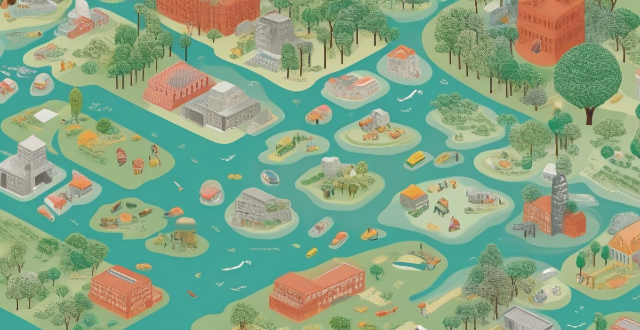Climate change significantly impacts human migration patterns, particularly the movement from rural to urban areas. This trend is influenced by direct effects like extreme weather events and changes in agricultural conditions, as well as indirect factors such as economic downturns in rural sectors and social considerations. To reduce rural-to-urban migration driven by climate change, adaptation strategies are needed to enhance resilience in rural areas through sustainable agriculture practices, infrastructure development, economic diversification, and community support programs.

The Influence of Climate Change on Rural-to-Urban Migration
Climate change is a global phenomenon that has far-reaching consequences, including its impact on human migration patterns. One significant trend observed in recent years is the movement of people from rural to urban areas, which is partly driven by climate change. This transition can be attributed to several factors that are directly or indirectly related to climate change.
Direct Impacts of Climate Change on Rural Areas
Extreme Weather Events
- Floods and Droughts: These events can destroy crops and make it difficult for farmers to sustain their livelihoods, leading them to seek opportunities in urban centers.
- Wildfires and Storms: Destruction of homes and infrastructure can force residents to relocate to more stable environments, often found in cities.
Changes in Agricultural Conditions
- Altered Growing Seasons: Unpredictable weather patterns can disrupt traditional planting schedules, affecting yields and income for farmers.
- Soil Erosion and Degradation: Increased temperatures and altered rainfall patterns can lead to soil issues, reducing agricultural productivity.
Indirect Impacts of Climate Change on Rural-to-Urban Migration
Economic Factors
- Job Losses in Rural Areas: As agriculture suffers, job opportunities decrease, pushing people to seek employment in urban industries.
- Reduced Income: Lower crop yields and higher input costs due to climate change can reduce disposable income, making it harder for families to stay in rural areas.
Social and Health Considerations
- Access to Services: Urban areas typically offer better access to healthcare, education, and social services, which become increasingly important as rural areas face challenges.
- Improved Standard of Living: Cities often provide better living conditions, including infrastructure and housing, attracting those affected by climate change in rural regions.
Environmental Displacement
- Sea-Level Rise: Coastal communities may be forced to move inland due to rising sea levels, with cities serving as potential new homes.
- Loss of Natural Resources: Climate change can lead to the depletion of resources like water and forests, essential for rural livelihoods.
Adaptation and Resilience in Rural Areas
To mitigate the effects of climate change on rural-to-urban migration, there is a need for adaptation strategies that enhance resilience in rural areas:
- Sustainable Agriculture Practices: Encouraging methods that are resilient to climate variability, such as drip irrigation and drought-resistant crops.
- Infrastructure Development: Investing in stronger infrastructure to withstand extreme weather events and improve living conditions.
- Economic Diversification: Creating diverse economic opportunities beyond agriculture to support rural economies.
- Community Support Programs: Providing social safety nets and educational programs to help communities adapt to changing conditions.
In conclusion, climate change plays a significant role in the decision of many individuals and families to leave rural areas for urban centers. Addressing this issue requires comprehensive strategies that not only focus on adaptation in rural areas but also consider the capacity of urban areas to absorb new populations sustainably.